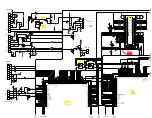
Chapter 2 Handling Paper
2-4
This section explains printing on special paper. The page
printer can use the following types of special paper. In this
case, set the media type according to the table below.
When using the above types of paper, be sure to use products
that are specified for use with photocopiers and/or page print-
ers. Feed paper other than colored paper or preprinted paper
from the MP (multi-purpose) tray. Use paper that is sold spe-
cifically for use with copiers (heat-fusing type). Label paper
and envelopes should not be placed in the cassette.
Since the composition and quality of special paper vary con-
siderably, special paper is more likely than white bond paper
to give trouble during printing. No liability will be assumed if
moisture, etc., given off in printing on special paper causes
harm to the machine or operator.
Before purchasing any type of special paper, test a sample on
the printer and check that print quality is satisfactory.
Specifications for each type of special paper are given below.
Transparency must be able to withstand the heat of fusing
during the printing process. It should satisfy the conditions
given in the table below.
If transparency jams frequently, pull the top of the sheet very
gently as it leaves the printer.
The basic rule for printing on adhesive labels is that the ad-
hesive must never come into contact with any part of the
printer. Adhesive paper sticking to the drum or rollers will
damage the printer.
Label paper must be manually fed.
Label paper has a structure comprised of three layers, as
shown in the figure below. The top sheet is printed on. The
adhesive layer consists of pressure-sensitive adhesives. The
carrier sheet (also called the linear or backing sheet) holds
the labels until use. Due to the complexity of its composition,
adhesive-backed label paper is particularly likely to give
trouble in printing.
Figure 2-2
Adhesive label paper must be entirely covered by its top
sheet, with no spaces between the individual labels. Labels
with spaces in between are apt to peel off, causing serious pa-
per jam problems.
Some label paper is manufactured with an extra margin of
top sheet around the edge. Do not remove the extra top sheet
from the carrier sheet until after printing is finished.
Figure 2-3
The table below lists the specifications for adhesive label paper.
Envelopes
The printer can print on envelopes using paper with a basis weight of
60 to 79 g/m
2
(16 to 21 lb/ream). Envelopes must be manually fed.
An envelope is a more complex object than a single sheet of
paper. For this reason, it may not be possible to obtain consis-
tent print quality over the entire envelope surface.
2. Special Paper
Paper type to be used
Media type to be selected
Colored paper
Color
Preprinted paper
Preprinted
Overhead projector
transparencies
Transparency
Postcards
Cardstock
Envelopes
Envelope
Label
Labels
Table 2-4
NOTE
2.1 Transparency (Overhead Projection Film)
Item
Specification
Tolerance of heat
Must tolerate at least 190 °C
(374 °F)
Thickness
0.100 to 0.110 mm (3.9 to 4.3 mils)
Material
Polyester
Dimensional accuracy
±0.7 mm (±0.0276 inches.)
Squareness of corners
90° ± 0.2°
Table 2-5
2.2 Adhesive-Backed Labels
Item
Specification
Weight of top sheet
44 to 74 g/m
2
(12 to 20 lb/ream)
Composite weight
104 to 151 g/m
2
(28 to 40 lb/ream)
Thickness of top sheet
0.086 to 0.107 mm (3.9 to 4.2 mils)
Composite thickness
0.115 to 0.145 mm (4.5 to 5.7 mils)
Moisture content
4 to 6 % (composite)
Table 2-6
Top sheet (White
bond paper)
Adhesive
Carrier sheet
Acceptable
Unacceptable
Top
sheet
Carrier
sheet
Summary of Contents for WP36/50
Page 1: ...1 1 1 Oc WP36 50 Operation Guide Education Services Oc Operation Guide English Version...
Page 12: ...1 1 Chapter 1 Names of Parts A B C D E F 2 3 4 1 0 9 8 7 6 5 H I J L K G Figure 1 1 Figure 1 2...
Page 94: ...Chapter 6 Fonts 6 2 PCL Scalable and Bitmap Fonts...
Page 95: ...Chapter 6 Fonts 6 3 KPDL Fonts 1...
Page 96: ...Chapter 6 Fonts 6 4 KPDL Fonts 2...
Page 115: ......
















































